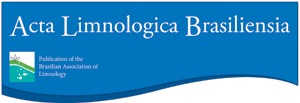Abstract:
Aim The construction of reservoirs in the Brazilian semiarid region is a predominant practice aimed mainly at water supply. Introducing fish in these ecosystems has generated environmental and social consequences. We analyzed articles on the ichthyofauna found in reservoirs from this region over the past 50 years.
Methods This qualitative-quantitative scientometric analysis considered the scientific impact of the articles, the origin of the species studied, the main topics covered, and women´s participation in the authorship. The articles were collected from the leading research databases: Google Scholar, SciELO (Scientific Electronic Library Online), and Web of Science.
Results We found 60 scientific papers on the subject. Most had low impact and visibility, and the state that contributed the most was Rio Grande do Norte (RN). The three most studied reservoirs made up almost half of the articles found (28). Research has only advanced considerably in the last decade, and the most discussed topics are related to the cultivation of commercial fish species, emphasizing pisciculture, reproductive biology, and fish nutrition.
Conclusions Despite the significant number of women participating, their visibility in the scientific community remains limited, which affects the community as a whole. Besides, it is crucial to continue promoting research on fish taxonomy, phylogenetics, and functional ecology in the reservoirs of the Brazilian semiarid region.
Keywords:
dams; semiarid; scientific publication; scientific impact

 Ichthyofauna of the Brazilian semiarid region reservoirs: a scientometric analysis of publications from the last 50 years
Ichthyofauna of the Brazilian semiarid region reservoirs: a scientometric analysis of publications from the last 50 years Thumbnail
Thumbnail
 Thumbnail
Thumbnail
 Thumbnail
Thumbnail
 Thumbnail
Thumbnail
 Thumbnail
Thumbnail




